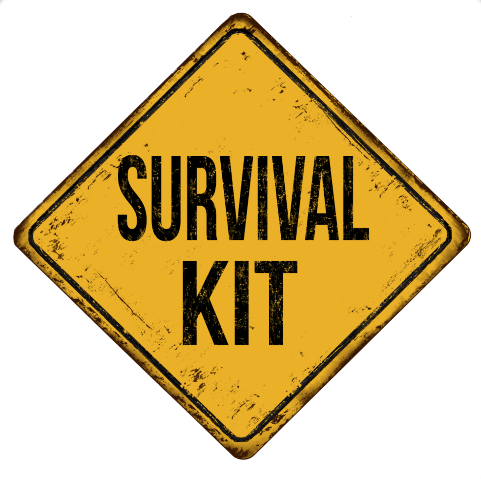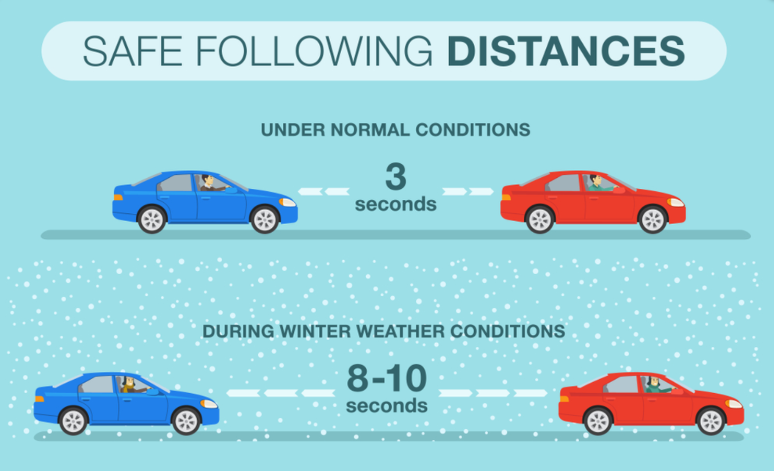Winter Driving

Winter Driving
For many people, thinking about winter driving might bring back memories of tires spinning on ice, the back parts of vehicles sliding off to the side on turns, and helping to push other cars out of snowbanks. Driving in a Canadian winter can be challenging, but road users can cooperate to make it as safe and comfortable as possible.

Depending on where they live and the severity of the weather in any particular year, drivers in Canada might have to contend with freezing drizzle, black ice, deep snowbanks that continue to grow throughout the season, and slippery roads where a skid is always imminent. Preparing for the winter is an essential part of every driver’s annual tasks.
Preparations for Winter

Getting the car ready for winter is the first task.
- Windshield wiper fluid and oils containing antifreeze help to keep the vehicle functioning properly.
- Winter tires are a good choice, especially for drivers who frequently leave the city for other destinations. According to the Government of Ontario’s website, winter tires can decrease stopping distance by 25% over all-season tires.
- In some areas, studded tires are good for additional traction, but many municipalities do not allow these types of tires as they can badly damage the pavement.
In addition to the mechanical preparation, it is important to stock the car with necessities for winter.
- An ice scraper and brush are necessary in most parts of Canada to clean off snow or ice that may hinder safe driving. It is important to clean all snow off of the vehicle before driving, as the wind may otherwise blow it onto the windshield.

Ensuring that the windows are clear of snow and frost is essential before starting out. On many vehicles, using the rear defroster feature is the best option for the back window, as the glass contains tiny electrical threads which can easily be damaged by ice scrapers. Also, if you run your vehicle’s engine in a garage to warm it up, be sure that the door is open to allow the potentially toxic carbon monoxide to escape.
Emergencies

A special winter emergency kit is important to have in the car in case you become stranded. Transport Canada recommends including:
- a survival candle in a deep can and matches
- a warm hat and scarf to help preserve your body’s heat, extra mittens or gloves and a change of clothes in case yours get wet
- a shovel, traction mats or kitty litter to use for the car’s wheels in ice or snow
- a reflective vest, a tow chain, and more.
If you get stuck in the snow, it is important to stay with your vehicle unless help is clearly visible within fifty or a hundred metres. Unless you can clearly see a building nearby, you should stay with your vehicle because of the dangers of getting lost in the snow. Set up flares, use your hazard lights, and if possible, tie a bright cloth to the radio antenna or spoiler to make your vehicle as visible as you can. Exercise to keep warm but avoid making yourself sweat, as this will cool you off. Most importantly, stay awake, as you may freeze to death if you fall asleep.
Staying warm is an essential factor for winter driving. Be sure to wear warm clothes, including gloves or mittens, or at least have the clothes readily available, whenever you set out. Although the British Medical Journal debunks the idea that 40-50% of body heat is lost through the head, keeping all body parts warm and covered is essential. Be especially careful of parts that can easily freeze, such as fingers, toes, and the tips of the ears.
Icy Roads
Even without becoming stranded, winter driving can be a challenge. Stopping on icy roads can take twice as long as on dry pavement, and drivers need to increase their following distance from other vehicles. Stopping a vehicle with anti-lock brakes requites firm pressure on the brake pedal, but for vehicles without that feature, raising your foot off the brake pedal at intervals will help keep the wheels from locking.

Despite your best efforts, you may at times find your car skidding. If you can, try to direct your car to the whiter, snowier parts of the road, as areas that look clear may in fact be covered with black ice. When water freezes on the road surface, it can sometimes form a thin and very slippery layer called black ice, which can cause vehicles to slide out of control.
Despite its many challenges, winter driving has its benefits. If you find your vehicle stuck in the snow or on an icy patch, you can try “rocking” it back and forth by alternating backing up and going forwards. If that draws the attention of other drivers or pedestrians on the road, you are likely to have offers of help to push you out of the rut that you are in. Helping and being helped can make the winter feel a bit less cold and dreary.
Reduced Traffic
Another factor making winter driving a bit easier is the reduction in other traffic on the road. While a few hardy cyclists still ride their bicycles and motorcycle riders still use their machines even in the coldest weather, the temperatures and road conditions mean that fewer people will be out in the air. Still, this may mean an increase in vehicles on the road as people take shelter from the elements.
Each season has its own set of challenges, and winter is no exception. Still, careful preparation and proactive driving can bring road users through the worst of conditions.
